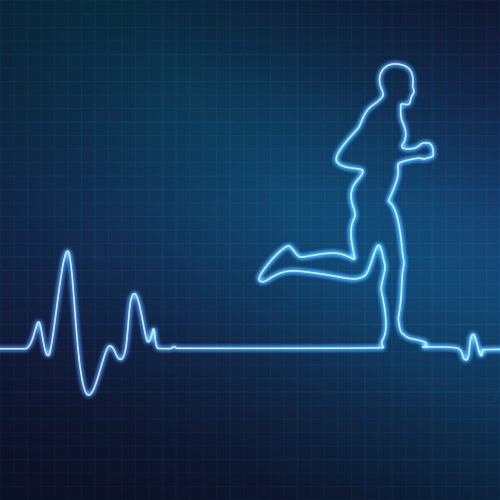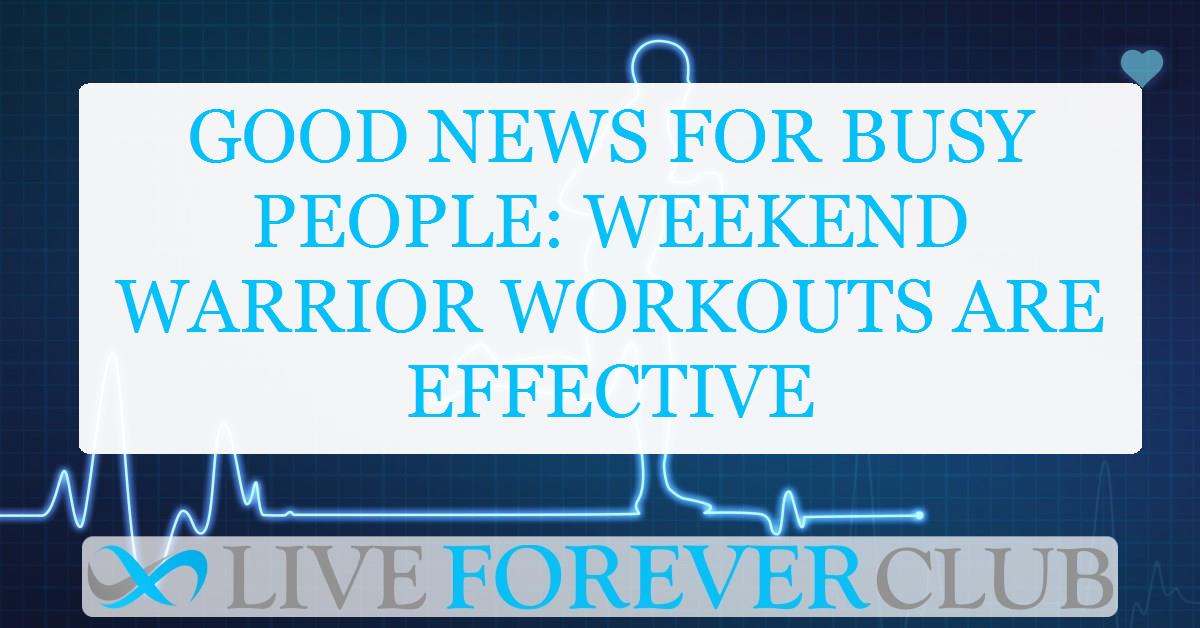Physical activity is a cornerstone of good health. From lowering the risk of chronic diseases to improving mental health and longevity, exercise is one of the best things you can do for your body. The World Health Organization (WHO) and the American Heart Association (AHA) both recommend at least 150 minutes of moderate-to-vigorous physical activity per week to achieve these health benefits.
But how important is it to spread that activity evenly throughout the week? Could cramming your exercise into a few days—like many "weekend warriors" do—provide the same benefits as regular, evenly distributed workouts? A recent study published in Circulation explores this very question, comparing the health outcomes of people who exercise primarily on weekends to those who spread their activity evenly throughout the week.
Physical Activity and Health: An Undeniable Link
There’s no denying the role physical activity plays in promoting health. For decades, research has consistently shown that regular exercise reduces the risk of many chronic diseases, including heart disease, stroke, type 2 diabetes, and even some cancers. Physical activity also improves mental health by reducing symptoms of depression and anxiety, while boosting cognitive function and mood.
However, meeting the recommended 150 minutes of moderate-to-vigorous physical activity per week remains a challenge for many. Life’s demands—work, family, and personal obligations—can make it difficult to find time for consistent exercise. That’s where the "weekend warrior" strategy comes in: people who can't fit in regular workouts during the week may cram their physical activity into the weekend.
But is this condensed activity pattern just as effective as spreading exercise evenly across the week? The latest study, using data from nearly 90,000 participants, explores this question in depth.
How Weekend Warriors Stack Up Against Regular Exercisers
The study, led by Shinwan Kany and colleagues, analyzed data from the UK Biobank, one of the largest and most comprehensive health databases. The researchers focused on participants aged 40 to 69 who wore wrist-based accelerometers to track their physical activity for one week. This allowed for precise measurement of actual physical activity patterns rather than relying on self-reported data, which can be inaccurate.
Participants were classified into three groups based on their activity levels:
- Inactive: Individuals who did less than 150 minutes of moderate-to-vigorous physical activity per week.
- Weekend Warriors: Those who achieved at least 150 minutes of physical activity, but concentrated it over 1 or 2 days of the week.
- Regular Exercisers: People who also achieved at least 150 minutes of activity, but spread it more evenly across the week.
The researchers wanted to determine whether weekend warriors experienced the same health benefits as regular exercisers. Specifically, they tested the associations between physical activity patterns and the risk of 678 different health conditions, focusing on cardiometabolic diseases such as hypertension, diabetes, and obesity.
Lower Disease Risk for Active Individuals
The results were encouraging for both weekend warriors and regular exercisers. When compared to inactive individuals, both groups had significantly lower risks of a wide range of diseases. In fact, physical activity—whether concentrated over the weekend or spread out across the week—was associated with lower risk for over 200 diseases, particularly those affecting cardiometabolic health.
Here are some key takeaways:
- Hypertension: Both weekend warriors and regular exercisers had lower risks of developing hypertension (high blood pressure). The hazard ratio (HR) for weekend warriors was 0.77 (95% confidence interval [CI], 0.73–0.80), while for regular exercisers, the HR was slightly lower at 0.72 (95% CI, 0.68–0.77).
- Diabetes: The risk of developing type 2 diabetes was also significantly lower in both groups. Weekend warriors had an HR of 0.57 (95% CI, 0.51–0.62), while regular exercisers had a comparable HR of 0.54 (95% CI, 0.48–0.60).
- Obesity: The protective effect of physical activity against obesity was also strong, with weekend warriors showing an HR of 0.55 (95% CI, 0.50–0.60) and regular exercisers at 0.44 (95% CI, 0.40–0.50).
- Sleep Apnea: For sleep apnea, weekend warriors had an HR of 0.57 (95% CI, 0.48–0.69), while regular exercisers had a slightly stronger reduction with an HR of 0.49 (95% CI, 0.39–0.62).
Overall, both weekend warriors and regular exercisers were broadly associated with lower risks of diseases across a range of categories, including circulatory, metabolic, and digestive conditions.
No Major Differences
One of the most striking findings of the study is that, despite the different activity patterns, there were no significant differences in disease risk between weekend warriors and regular exercisers. When the researchers directly compared the two groups, they found no conditions for which one pattern was significantly better than the other.
This suggests that it’s not how you distribute your physical activity across the week that matters—it’s the total amount of activity that counts. Whether you spread your workouts evenly or concentrate them over the weekend, what’s important is reaching the 150-minute threshold of moderate-to-vigorous activity per week.
Focus on Cardiometabolic Conditions
The protective effect of physical activity was particularly strong for cardiometabolic conditions such as hypertension, diabetes, obesity, and sleep apnea. These conditions are major contributors to cardiovascular diseases, which remain the leading cause of death worldwide.
Hypertension, for example, can increase the risk of heart attack, stroke, and kidney disease. In the study, both weekend warriors and regular exercisers had around a 25% lower risk of developing hypertension compared to inactive individuals.
Type 2 diabetes, another major cardiometabolic condition, is closely linked to obesity and a sedentary lifestyle. The study showed that people who met physical activity guidelines—regardless of how they distributed their activity—had nearly 50% lower odds of developing diabetes.
Finally, obesity—a risk factor for both diabetes and cardiovascular diseases—was strongly associated with lower risk in both weekend warriors and regular exercisers. This finding underscores the importance of physical activity in weight management and metabolic health.
Implications for Public Health and Exercise Guidelines
The findings of this study could have significant implications for public health. Traditionally, exercise guidelines have emphasized the importance of regular, consistent activity spread throughout the week. However, these new findings suggest that for many people, a concentrated weekend exercise routine may be just as beneficial.
This is good news for those with busy schedules who struggle to find time for regular exercise during the week. As long as you can squeeze in the recommended 150 minutes of activity, you can still enjoy the same health benefits as those who exercise more consistently.
Public health campaigns may need to shift their messaging to emphasize that any pattern of physical activity is better than none. Whether people prefer to exercise regularly or fit it all in on the weekend, the key is to meet the weekly activity guidelines.
Role of Wearable Technology in Monitoring Activity
One of the strengths of this study is its reliance on accelerometer data from wrist-based fitness trackers. These devices offer a more accurate measure of physical activity than traditional self-reported data, which can be subject to recall bias or exaggeration.
Wearable technology is playing an increasingly important role in promoting physical activity. Devices like Fitbit, Garmin, and Apple Watch can track steps, heart rate, and activity intensity, providing users with real-time feedback on their progress toward fitness goals.
For individuals aiming to adopt a weekend warrior approach, these devices can help ensure they reach the 150-minute mark of moderate-to-vigorous activity per week. Fitness trackers can also motivate people to stay active, offering reminders and rewards for meeting activity targets.
Alternative Definitions of Weekend Warrior Activity
The study also explored several alternative definitions of "weekend warrior" activity. For example, one definition required that 50% of total activity be completed on two consecutive days, while another definition focused specifically on activity performed on the weekend (Saturday and Sunday).
Interestingly, the results remained consistent across these different definitions. Even when the criteria for weekend warrior activity were made more stringent, the health benefits of physical activity were still robust. This suggests that the health benefits of physical activity are not confined to a particular activity pattern—what matters most is the total volume of exercise.
Limitations of the Study
While the findings of the study are promising, it’s important to acknowledge some limitations. First, the study is observational, which means it can’t prove causality. Although the results suggest a strong association between physical activity and lower disease risk, other factors could contribute to these outcomes.
Second, the study only measured physical activity over a single week, which may not fully reflect participants’ long-term habits. Some individuals may have exercised more or less than usual during the week they wore the accelerometer.
Finally, the UK Biobank cohort is predominantly White, which may limit the generalizability of the findings to other ethnic or racial groups. Future studies with more diverse populations are needed to confirm these results.
Practical Takeaways
So, what does this mean for you? Whether you’re a weekend warrior or a regular exerciser, the key takeaway is that physical activity is crucial for your health. Here are some practical tips based on the study’s findings:
- Aim for 150 minutes of activity per week: Whether you prefer to exercise on the weekend or throughout the week, aim to meet the recommended 150 minutes of moderate-to-vigorous physical activity each week.
- Don’t stress about the timing: If you can’t find time to exercise regularly, don’t worry—cramming your activity into the weekend can still provide substantial health benefits.
- Use technology to stay motivated: Wearable fitness trackers can help you monitor your progress and ensure you’re meeting your activity goals. They also provide motivation through reminders and rewards.
- Focus on total activity: Whether you’re walking, jogging, cycling, or doing strength training, the total amount of time you spend being active is more important than how you spread it out.
Future Research
While this study provides valuable insights into the health benefits of different physical activity patterns, more research is needed to explore long-term outcomes and the effects of physical activity in more diverse populations. Future studies should also investigate the potential benefits of combining physical activity with other interventions, such as medication or dietary changes, to improve cardiometabolic health.
In conclusion, the study offers reassurance to weekend warriors and regular exercisers alike. What matters most is achieving the recommended amount of physical activity per week—whether you do it all on the weekend or spread it out across the week, your body will thank you for it.
The study is published in the journal Circulation. It was led by Dr. Shaan Khurshid from Massachusetts General Hospital, Boston.






